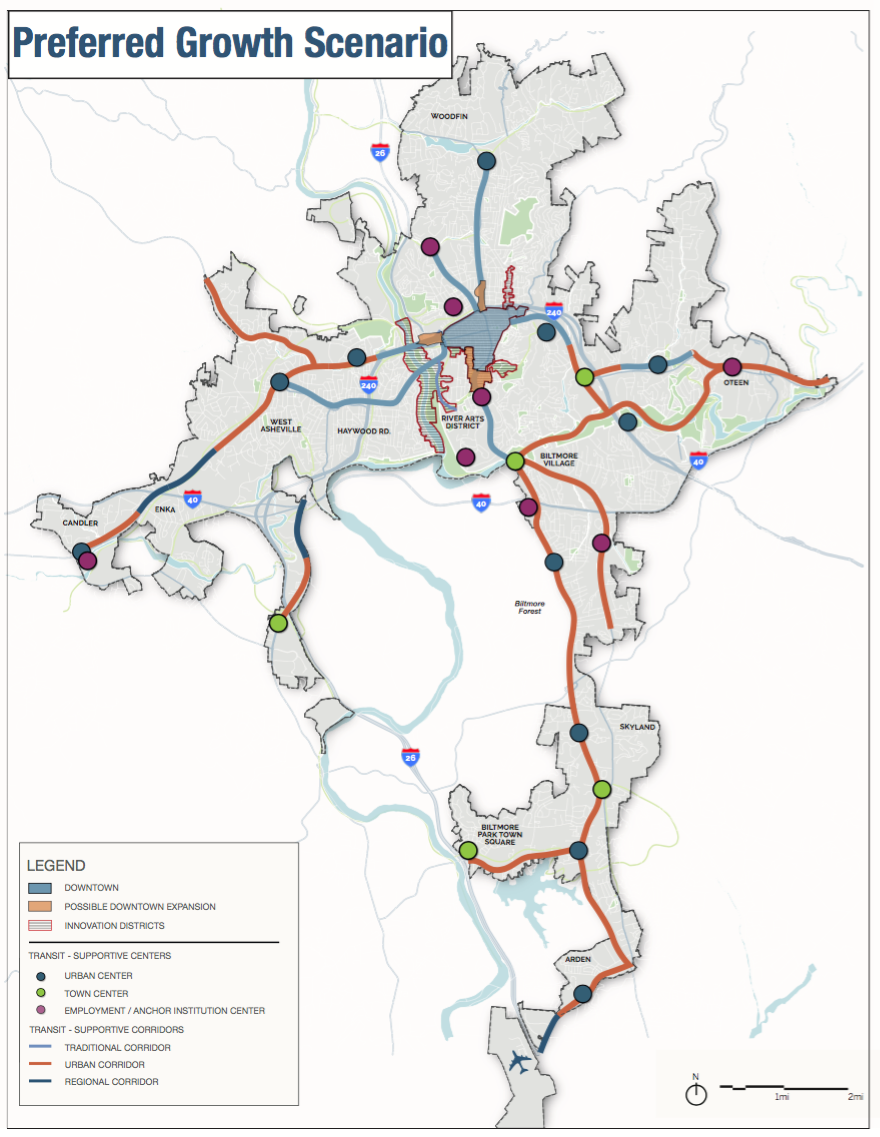Developers in Asheville will be able to post new high scores for affordable housing — and be rewarded with additional city funding — after City Council unanimously passed changes to the Land Use Incentive Grant policy at its regular meeting on Sept. 11. As explained by Jeff Staudinger, the city’s interim community development director, the LUIG point maximum will increase from 140 to 200, with every 10 points worth a rebate of one year of city property taxes above a property’s pre-development total.
But those developers will also face stricter conditions when applying for LUIG money. The minimum period for which a project must guarantee affordable housing will increase from 15 to 20 years. Additionally, applicants will be required to submit additional maps and documentation demonstrating the efficiency of the project’s location.
LUIG’s purpose, Staudinger reminded Council, is “to incentivize the development of affordable and workplace housing in locations that are convenient for the residents of that housing to access jobs and community services.” He added that the changes, first proposed by city’s Affordable Housing Advisory Committee earlier in the year, had passed a “reality check” with numerous area developers.
The revised policy adds a bevy of bonuses for projects that meet certain criteria. Developments built on brownfields, for example, will receive an additional 10 points, while those built downtown will earn an extra 20 points. Housing units that serve low-income households, defined as earning 60 percent or less of the area median income (roughly $30,000), will qualify for a new 10- or 20-point incentive. Permanently affordable housing, defined by a 50-year guarantee, will score a project 20 more points.
The revisions also broaden the scope of existing LUIG criteria. Currently, developers can earn five points for projects within a mile of three “designated job centers”: downtown, Mission Hospital’s main campus, and Biltmore Town Square. The definition of job center will now be expanded to include “urban centers” as defined by the Living Asheville comprehensive plan or any “large concentrations of employment” identified by the applicant.
Projects built on hourly transit routes marked for increased service under the Transit Master Plan will now qualify for a five-point bonus. Previously, only projects served by twice-hourly frequency were eligible for an incentive.
During public comment on the changes, Better Buses Together member Sabrah n’haRaven argued against the new transit-based incentive. She pointed out that Council had not yet committed all of the funds to enact the Transit Master Plan and that current hourly service was not “a practical transportation option” for bus riders.
“All our goals and all our intentions can be scattered to the winds at a moment’s notice, and none of us today can guarantee what is actually going to happen with the [Transit Master Plan] or when it’s going to happen,” n’haRaven said. “The LUIG policy needs to reward developers for what they are doing today, not what we might or might not be able to do in the future.”
Council members did not respond to n’haRaven’s critique but offered their own hopes for additional LUIG alterations. Vijay Kapoor asked about language that would require projects receiving grant funds to create a net increase in affordable housing. He referenced Council’s 2016 approval of a South Asheville apartment complex that included 29 affordable units but displaced 55 low-income, mostly Hispanic families from a mobile home park.
Meanwhile, Julie Mayfield requested a new set of bonuses for energy-efficient developments based on current language for Housing Trust Fund projects. Staudinger assured both Council members that those changes would be brought before the Affordable Housing Advisory Committee on a future agenda.






Lots of hoops to jump through to get this incentive. Cheaper and better profits for developers to do what they want. Nice try C.O.A., but no dice.
How many ‘points’ is the AVL Housing Authority getting for new ghetto creation ?